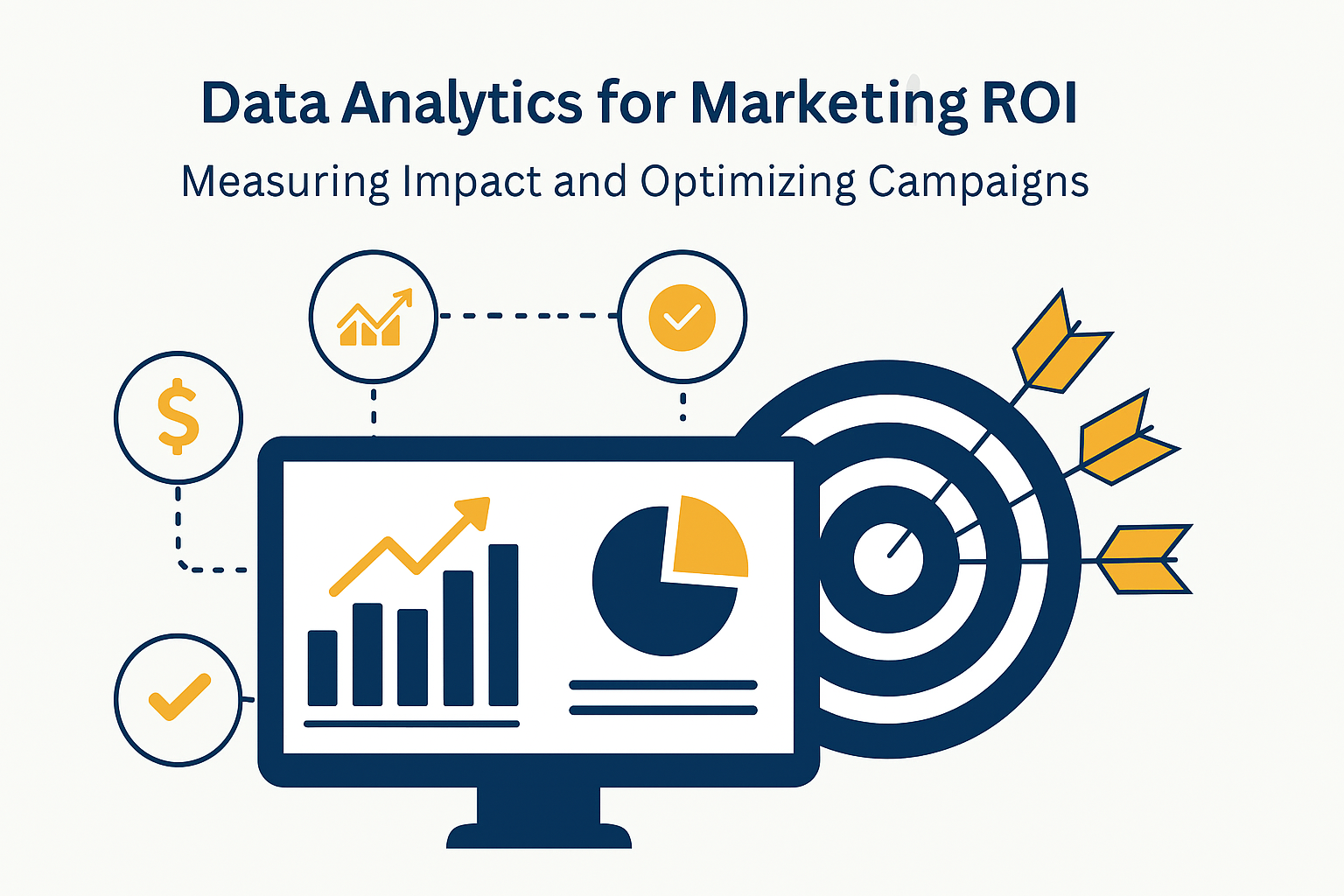In the data-rich environment of modern digital marketing, the ability to effectively collect, analyze, and interpret data is paramount for demonstrating value, optimizing spend, and driving superior return on investment (ROI). This comprehensive blog post explores how data analytics empowers marketers to move beyond guesswork, providing a strategic framework for measuring campaign impact and continuously improving performance. We’ll begin by establishing the critical link between data analytics and marketing ROI, explaining how data provides the insights needed to understand what’s working, what’s not, and why. The article will then delve into the foundational steps of a data-driven marketing approach, starting with defining clear marketing objectives and identifying key performance indicators (KPIs) that directly align with business goals (e.g., customer acquisition cost, lifetime value, conversion rates, engagement metrics). A significant portion of the post will be dedicated to various data sources and collection methods, including website analytics (Google Analytics, Adobe Analytics), CRM data, social media insights, email marketing platforms, advertising dashboards, and survey data. We’ll discuss the importance of data integration and creating a unified view of the customer journey across multiple touchpoints. The article will then explore different types of analytics – descriptive, diagnostic, predictive, and prescriptive – and how each can be applied to marketing challenges. For instance, descriptive analytics helps understand past campaign performance, diagnostic analytics uncovers the ‘why’ behind results, predictive analytics forecasts future trends, and prescriptive analytics recommends optimal actions. We’ll detail practical applications such as attribution modeling to understand which channels contribute most to conversions, A/B testing for optimizing creative and landing pages, audience segmentation for targeted campaigns, and customer journey mapping to identify friction points. The role of advanced analytics, including machine learning, in uncovering hidden patterns, predicting customer behavior, and automating optimization processes will also be highlighted. Furthermore, the blog will address common challenges in marketing data analytics, such as data silos, data quality issues, the complexity of tools, and the need for analytical skills within marketing teams. We’ll provide actionable advice on building a data-driven culture, fostering collaboration between marketing and data science teams, and choosing the right analytics tools and platforms. By mastering data analytics, marketers can not only prove the value of their efforts but also gain a competitive edge by making smarter, more impactful decisions that consistently drive higher marketing ROI and sustainable business growth.

